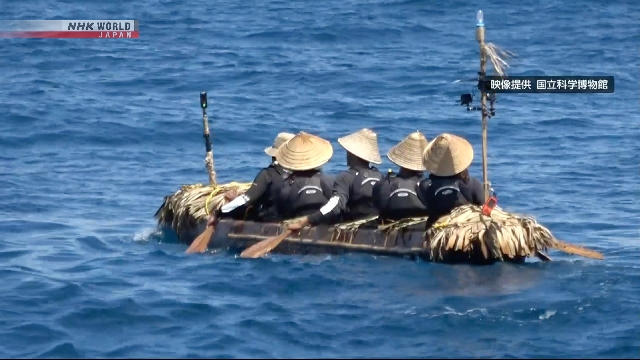A research group in Japan has made a supercomputer simulation on how ancient people crossed the waters between Taiwan and the southwestern Japanese island of Yonaguni about 30,000 years ago.
The simulation was a follow-up of a 2019 experimental dugout canoe voyage conducted at a strait between Taiwan and Yonaguni by a project team including researchers from Japan’s National Museum of Nature and Science and others.
The voyage was aimed at examining a hypothesis that human beings crossed the 110-kilometer-wide strait, where the strong Kuroshio Current intervenes, around 30,000 years ago. The dugout successfully reached Yonaguni.
The follow-up research team was led by Deputy Senior Scientist Yu-Lin Chang at JAMSTEC, and Professor Kaifu Yosuke at University of Tokyo.
The researchers used a supercomputer to simulate whether such a voyage was successful under different conditions that existed 30,000 years ago.
Based on the experiment, the team assumed that the canoe traveled up to 1.08 meters per second, and used a numerical model to recreate sea currents 30,000 years ago on the computer. The purpose was to determine under what conditions the canoe could reach Yonaguni Island.
At that time, the Kuroshio Current is believed to have been 10 percent faster than present. But the researchers found that if paddlers departed from northern Taiwan, headed southeastward against the current at a constant speed, they could reach the island.
The team calls the ancient people who crossed the waters challengers with a strategic perspective.
Professor Kaifu said that he believes ancient people were aware of the dangers involved in the crossing but they must have been so confident that they took the risk. He said that in that sense, ancient and modern day human beings are similar.
The findings have been published in US magazine Science Advances.


AloJapan.com